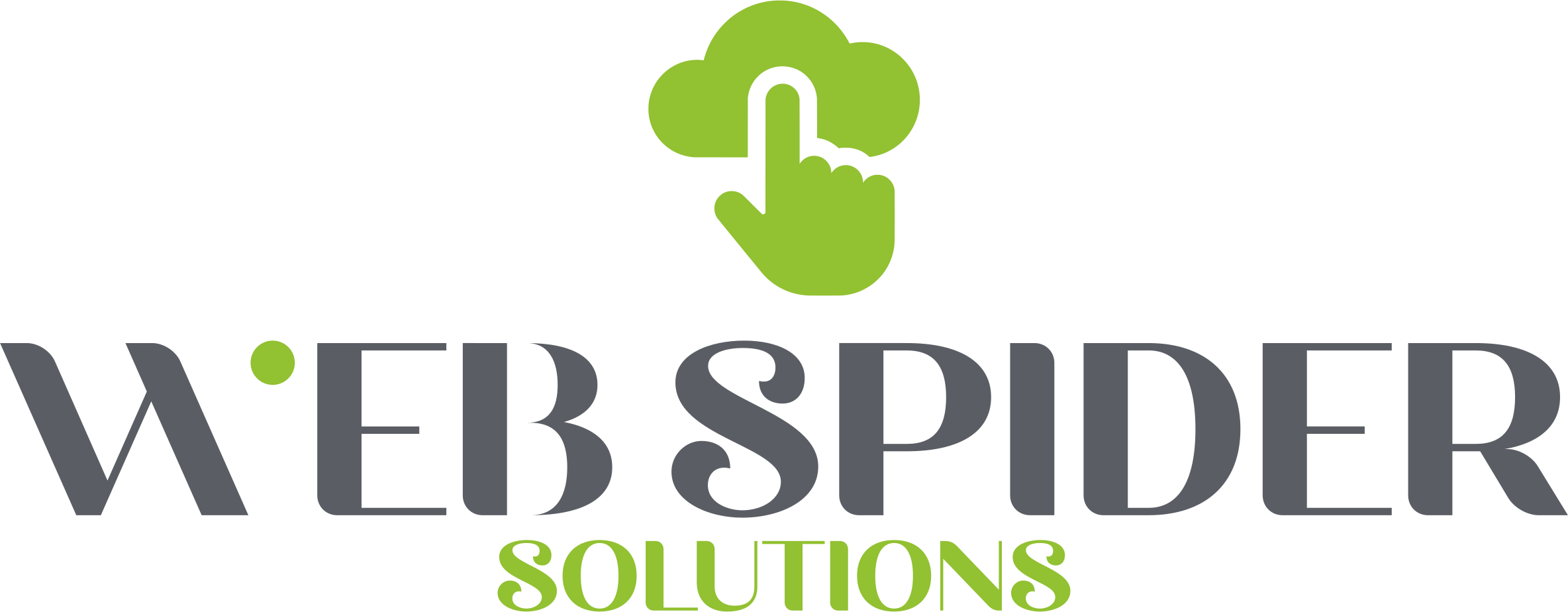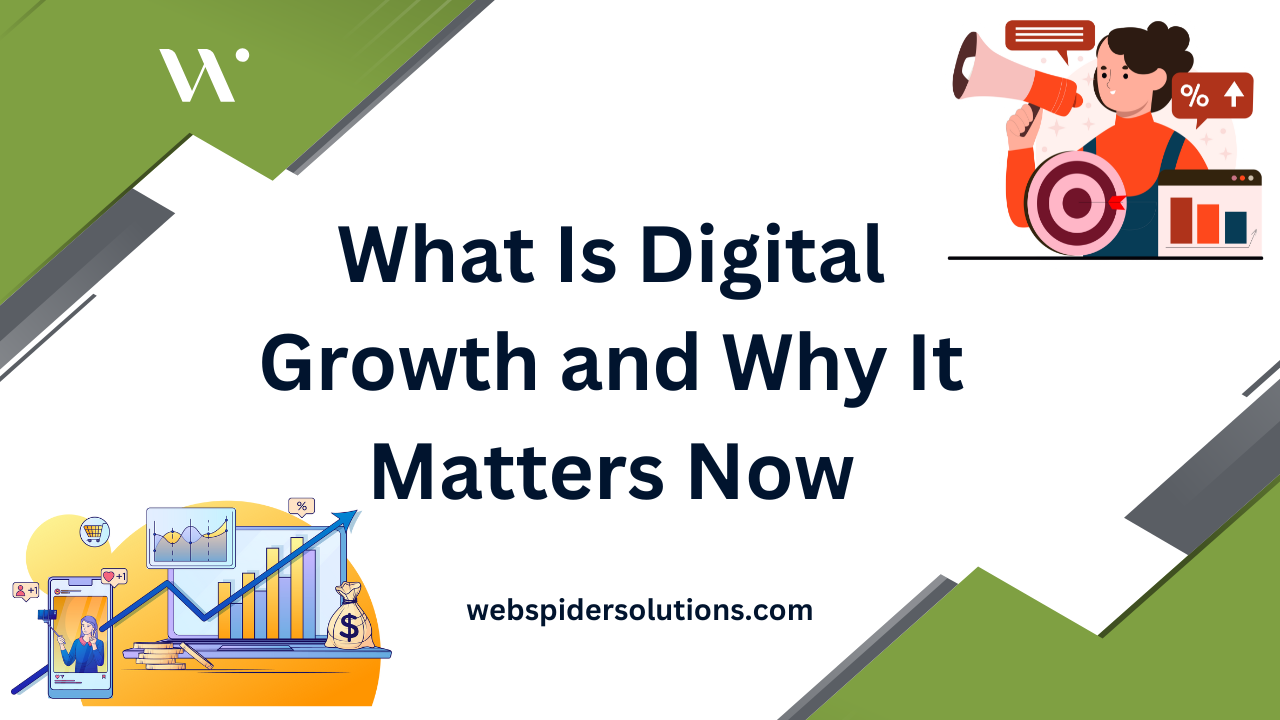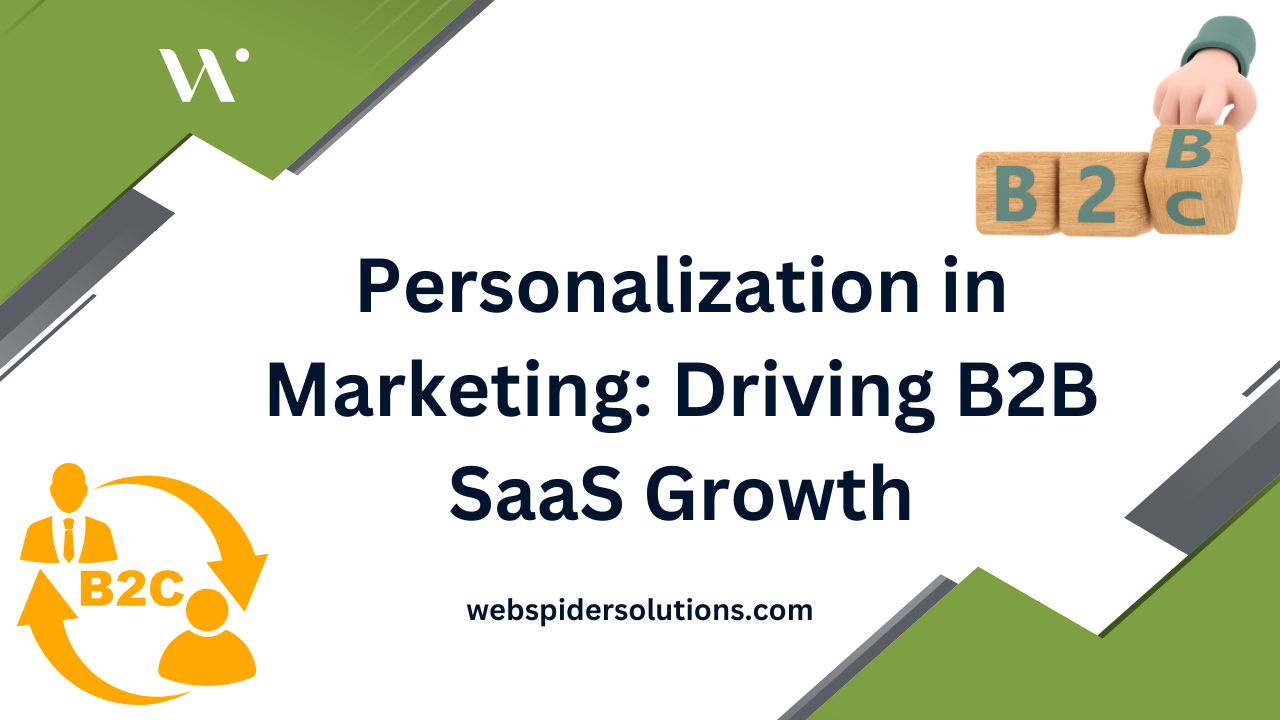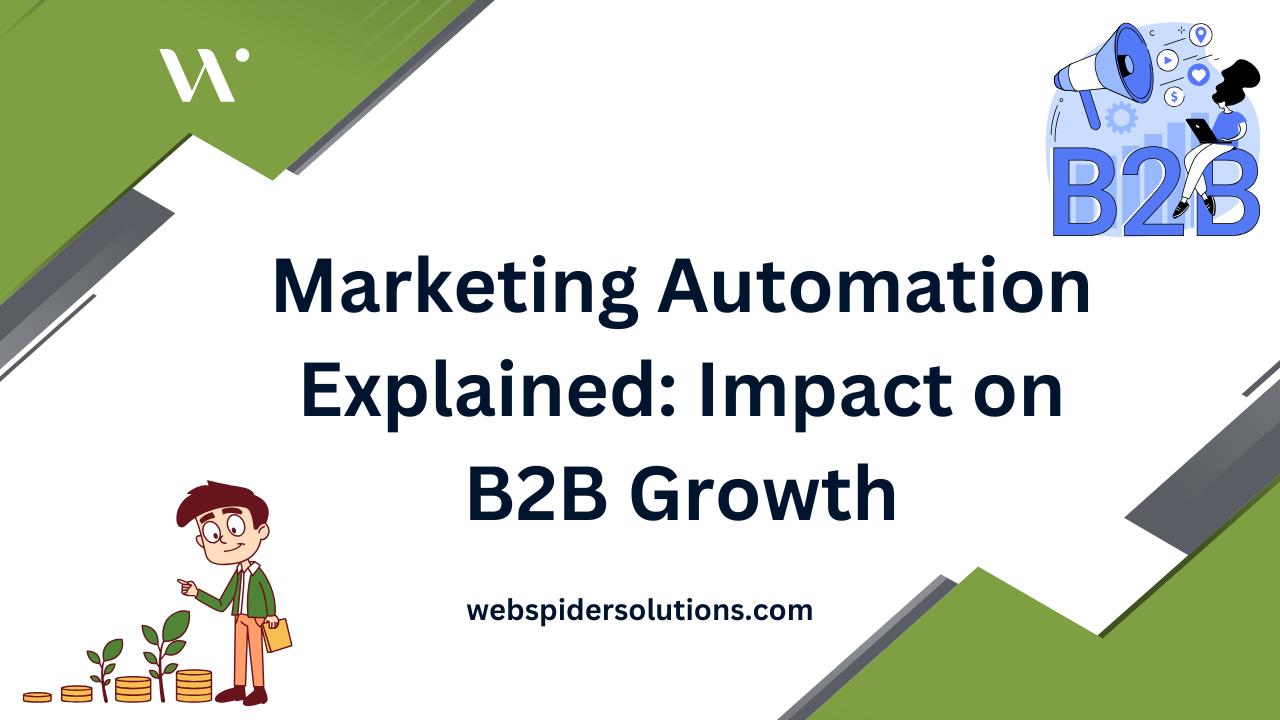Did you know that businesses publishing regular, high-quality content see up to 67% more leads than those who do not? Strong content does more than fill a website. It shapes the way brands are discovered and trusted online, helping customers make informed decisions. The right approach turns content into a driving force that pulls in new audiences, builds credibility, and nurtures meaningful relationships with every word.
Table of Contents
- Why Content Is King In Digital Marketing
- Types Of Content That Drive Success
- Key Features Of High-Impact Content
- Real-World Applications And Business Value
- Common Content Strategies And Pitfalls
Key Takeaways
| Point | Details |
|---|---|
| Content as a Core Strategy | High-quality content is essential for attracting, engaging, and converting audiences online. It plays a central role in SEO and brand authority. |
| Diverse Content Types | Utilize various formats like blogs, videos, and infographics to engage different audience segments and achieve specific business goals. |
| Key Features of High-Impact Content | Successful content should provide actionable insights, relevant information, and compelling storytelling to drive engagement and conversions. |
| Avoiding Common Pitfalls | Focus on quality over quantity, maintain a consistent brand voice, and regularly measure content performance to optimize marketing effectiveness. |
Why Content Is King in Digital Marketing
Content has transformed from a simple communication tool to the backbone of digital marketing strategies. When we talk about content being “king,” we’re referring to its unparalleled power to attract, engage, and convert audiences in the digital landscape. High-quality content drives organic visibility, builds brand authority, and creates meaningful connections with potential customers.
According to research from Marketing College, high-quality, unique content significantly improves SEO by helping websites rank organically through strategic keyword usage, internal linking, and consistent publication. This isn’t just about search rankings – it’s about creating valuable resources that genuinely help your audience. When content provides real solutions, audiences respond by sharing, commenting, and engaging, which further amplifies your digital presence.
Particularly compelling is the impact of user-generated content (UGC). Understanding Content Marketing: A Complete Introduction reveals that authenticity drives consumer decisions. Research indicates that up to 59% of millennials are influenced by UGC, with 84% stating that company website user content impacts their purchasing choices. This demonstrates content’s royal status – it’s not just about broadcasting messages, but creating genuine, trustworthy narratives that resonate with your target audience.
Successful digital marketing now hinges on content that is:
- Valuable and informative
- Consistently published
- Tailored to audience needs
- Authentic and engaging
By prioritizing these principles, businesses can leverage content as a powerful strategic asset that attracts, converts, and retains customers in an increasingly competitive digital marketplace.
Types of Content That Drive Success
Content marketing is far more than just writing blog posts. It’s a sophisticated strategy that leverages multiple formats to engage, educate, and convert audiences. According to research, a robust content ecosystem encompasses a wide range of media designed to build trust and drive business objectives.
According to HubSpot’s research, marketers have a diverse arsenal of content types. These include blogs, videos, infographics, case studies, e-books, user-generated content, checklists, memes, testimonials, whitepapers, how-to guides, and even influencer or paid-ad content. 7 Content Marketing Trends to Know for 2024 suggests that each content type serves unique purposes in the customer journey.
Wikipedia’s content marketing overview highlights that these formats are strategically designed to achieve multiple goals: building brand awareness, generating traffic, capturing leads, and ultimately driving sales. The key is understanding which content type resonates best with your specific audience and business objectives.
Here are content types that consistently drive success:
- Blogs: Long-form educational content
- Videos: Engaging visual storytelling
- Infographics: Complex data simplified visually
- Case Studies: Proof of real-world results
- User-Generated Content: Authentic social proof
- Podcasts: On-demand audio learning
By diversifying your content strategy and understanding each format’s strengths, you can create a powerful marketing approach that connects with audiences across multiple touchpoints.

Here’s a comparison of major content types and their primary benefits:
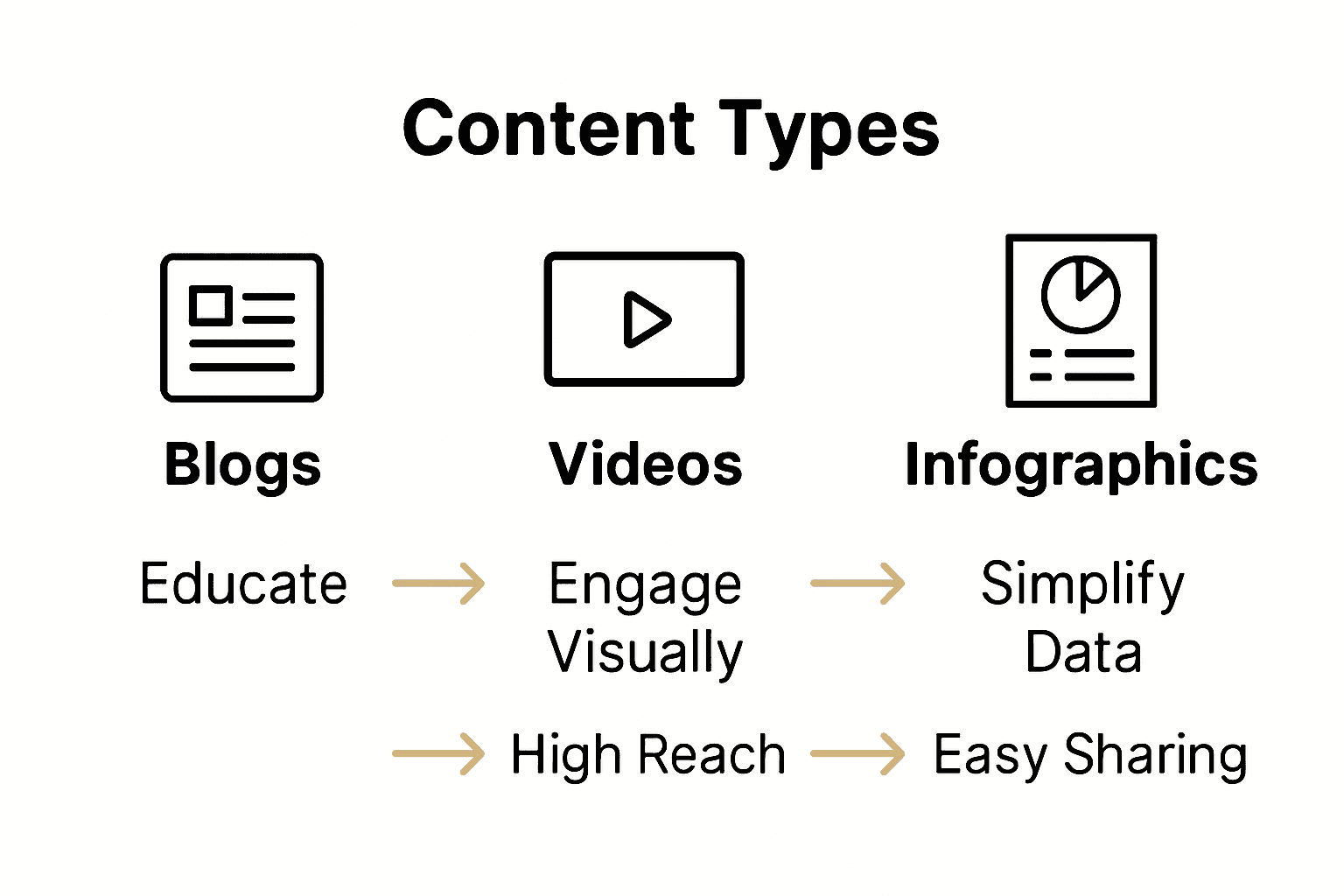
| Content Type | Main Purpose | Key Benefit |
|---|---|---|
| Blogs | Educate & inform | Boost SEO |
| Videos | Engage visually | High audience reach |
| Infographics | Simplify complex data | Easy sharing |
| Case Studies | Showcase real results | Build credibility |
| User-Generated | Provide social proof | Enhance authenticity |
| Podcasts | On-demand learning | Expand brand voice |
Key Features of High-Impact Content
Content isn’t just about filling web pages – it’s a strategic tool designed to connect, convert, and create lasting impact. High-performance content goes beyond simple information delivery, transforming into a powerful business asset that drives meaningful engagement and tangible results.
According to research from Knotch, high-performing content combines visibility with measurable business outcomes. The core features include providing actionable insights with clear calls-to-action and sharing novel or updated information to establish authority. How to Run a Content Audit in 2024 emphasizes the importance of continually evaluating and refining content strategies to maintain relevance and effectiveness.
Recent research from Large Language Model studies highlights the emerging potential of advanced technologies in content creation. These technologies enable unprecedented levels of content personalization, real-time customer insights, and strategic optimization, allowing businesses to create more targeted and responsive content experiences.
Key features of high-impact content include:
- Actionable Insights: Practical, implementable information
- Clear Purpose: Defined goals and targeted messaging
- Audience Relevance: Tailored to specific reader needs
- Compelling Storytelling: Emotional and intellectual engagement
- Data-Driven Approach: Backed by research and verifiable information
- Continuous Optimization: Regular updates and refinement
By integrating these features, content becomes more than just information – it transforms into a strategic tool that drives business growth, builds trust, and creates meaningful connections with your audience.
Real-World Applications and Business Value
Content marketing has evolved from a theoretical concept to a tangible business strategy with measurable impact across industries. Strategic content now serves as a powerful mechanism for driving engagement, building brand credibility, and generating substantial revenue streams.
A compelling example of content’s business value comes from user-generated content campaigns. According to research, Coca-Cola’s “Share a Coke” campaign demonstrated how creative content strategies can directly influence consumer behavior. The campaign drove a remarkable 2% revenue increase, showcasing the profound impact of audience-focused content. The Rise Of Vertical SaaS illustrates how targeted content can transform industry-specific marketing approaches.
Additional research on Large Language Models highlights the emerging potential of advanced content strategies. These technologies enable real-time personalization, campaign optimization, and automation, translating complex data into efficient, targeted content delivery that directly impacts customer engagement and return on investment.
Real-world content applications demonstrate tangible business benefits:
- Brand Awareness: Expanding market visibility
- Customer Acquisition: Attracting potential clients through valuable insights
- Trust Building: Establishing thought leadership
- Lead Generation: Converting audience interest into business opportunities
- Customer Retention: Maintaining ongoing engagement
- Revenue Growth: Directly impacting bottom-line results
By understanding and implementing strategic content approaches, businesses can transform communication from a cost center into a dynamic revenue generation engine.
Common Content Strategies and Pitfalls
Content marketing is a sophisticated discipline that requires strategic planning and nuanced execution. Effective content strategies demand more than just creating material – they require a holistic approach that balances creativity, data-driven insights, and audience understanding.
Research from multiple sources highlights critical mistakes that can derail content marketing efforts. According to MarketMuse, frequent pitfalls include inconsistent brand voice, lack of a comprehensive content plan, poor content promotion, and neglecting SEO best practices. Smart Content Marketing Strategies 2025 emphasizes the importance of developing a robust, adaptable content framework that can evolve with changing market dynamics.
Additional research by content strategy experts reveals deeper strategic challenges. These include ignoring comprehensive audience research, failing to maintain an omnichannel presence, not updating older content, and critically, not measuring content performance metrics. These oversights can significantly hinder engagement, audience retention, and overall marketing effectiveness.
Common content strategy pitfalls to avoid:
- Quantity Over Quality: Prioritizing volume instead of value
- Inconsistent Messaging: Fragmented brand communication
- Neglecting SEO: Overlooking search engine optimization
- Lack of Measurement: Failing to track performance
- Ignoring Audience Insights: Creating content in a vacuum
- Poor Distribution: Ineffective content promotion
By understanding and proactively addressing these strategic challenges, businesses can develop more resilient, impactful content marketing approaches that genuinely connect with their target audiences.
Unlock the True Power of Content for Your Business Growth
Struggling to turn your content into a reliable source of leads and customer trust is a common challenge many marketers face. This guide highlights pain points such as inconsistent messaging, lack of strategic planning, and missed opportunities to maximize SEO and authentic engagement. If you want to break free from content strategies that do not deliver measurable results, understanding how to create high-impact, audience-relevant content is essential.
At Web Spider Solutions, we specialize in transforming your content marketing efforts into a strategic growth engine. Our tailored solutions emphasize actionable insights, continuous optimization, and leveraging the right content formats that resonate with your target market. Whether you need to boost organic rankings or drive traffic with expert paid campaigns, our comprehensive services are designed to help you dominate your digital space with precision. Explore our Stories Archives for inspiration and stay ahead with the latest in Paid Advertising tactics.
Ready to elevate your content marketing strategy and convert engagement into real business value? Visit Web Spider Solutions today to get a free SEO audit and personalized consultation that sets you on the path to digital market leadership.
Frequently Asked Questions
What are the key features of high-impact content?
High-impact content should include actionable insights, a clear purpose, audience relevance, compelling storytelling, a data-driven approach, and continuous optimization to drive engagement and business growth.
How does content marketing impact SEO?
High-quality, unique content improves SEO by helping websites rank organically through strategic keyword usage, internal linking, and consistent publication, ultimately leading to better visibility and traffic.
What types of content should be included in a successful content marketing strategy?
A successful content marketing strategy should include blogs, videos, infographics, case studies, user-generated content, podcasts, and more, each serving different purposes at various stages of the customer journey.
How can businesses measure the effectiveness of their content marketing efforts?
Businesses can measure the effectiveness of their content marketing by tracking performance metrics such as engagement rates, website traffic, lead generation, conversion rates, and overall revenue growth derived from content initiatives.

